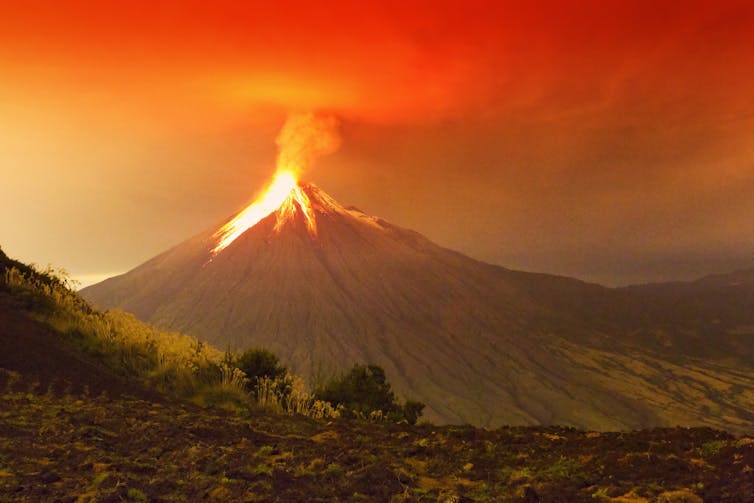A history of bad times
When pondering the worst time to be alive, many would instinctively point to the COVID-19 pandemic. While it’s true that the pandemic brought unprecedented challenges and devastation, history reveals far worse periods. But which era stands out as the most dire? Surprisingly, it is not the Black Death of 1349, which ravaged Europe, nor the 1918 flu pandemic that claimed 50-100 million lives. Instead, the answer lies in the year 536.
In 536, a bizarre and ominous fog swept across Europe, the Middle East, and parts of Asia, plunging the world into an eerie darkness that lasted for 18 months. This was no ordinary fog; it obscured the sun during the day, causing temperatures to plummet, crops to fail, and death tolls to rise, according to History.com. It was the actual Dark Age.

536: the worst year in history?
536 is the current consensus candidate for worst year in human history. A volcanic eruption, or possibly more than one, somewhere in the northern hemisphere would seem to have been the trigger.
Wherever it was, the eruption precipitated a decade-long “volcanic winter”, in which China suffered summer snows and average temperatures in Europe dropped by 2.5°C. Crops failed. People starved. Then they took up arms against each other.
In 541 bubonic plague arrived in Egypt and went on to kill around a third of the population of the Byzantine empire.
Even in distant Peru, droughts afflicted the hitherto flourishing Moche culture.
Increased ocean ice cover (a feedback effect of volcanic winter) and a deep solar minimum (the regular period featuring the least solar activity in the Sun’s 11-year solar cycle) in the 600s ensured that global cooling continued for more than a century.
Many of the societies living in 530 simply could not survive the upheavals of the decades that followed.

The new ‘science’ of climate history
Historians now take a particular interest in subjects such as this because we can collaborate with scientists to reconstruct the past in new and surprising ways.
Only a fraction of what we know, or think we know, about what happened during such murky moments now comes from traditional written sources. We have a few for 536: the Byzantine historian Procopius wrote that year that “a most dread portent has taken place”, and the Roman senator Cassiodorus noted in 538
[…] the sun seems to have lost its wonted light and appears a bluish colour. We marvel to see no shadows of our bodies at noon and to feel the mighty vigour of its heat wasted into feebleness.
Yet the real strides in historical understanding of this “worst ever year” are emerging through application of such advanced techniques as dendroclimatology and analysis of ice cores.
Dendroclimatologist Ulf Büntgen detected evidence of a cluster of volcanic eruptions, in 536, 540 and 547, in patterns of tree-ring growth. Likewise, “ultraprecise” analysis of ice from a Swiss glacier undertaken by archaeologist Michael McCormick and glaciologist Paul Mayewski has been key to understanding just how severe the climate change of 536 was.
Such analyses are now seen as important, even essential, resources in the historian’s methodological toolkit, especially for discussing periods without an abundance of surviving records.
Some historians – including Kyle Harper, Jared Diamond and Geoffrey Parker – use developments in this growing field to construct whole revisionist narratives about the rise and fall of particular societies. For them, conditions on our planet are far more significant in driving our history forward than we ever realised.
Coping with adversity
But what was it like living through a climate-changing event such as that which began in 536? It’s a question historians continue to ponder as we sift through our sources.
Most of those alive in 536 probably didn’t know they had it so bad. As historians, we are prone to over-rely on anecdotal doom-laden snippets like the quotations from Procopius and Cassiodorus.
Yet, like the proverbial frog in boiling water, the average person back then may only have realised slowly just how grim conditions in their world were getting. The worst moment would not in fact have been in 536 but some time after – when the full effects of plagues and droughts, chills and famines had truly set in.
READ MORE
- People Are Wondering What This Bizarre ‘Nose Cover’ Trend Gen Z Are Doing in Photos
- People are only just realising what WC toilet sign actually stands for



